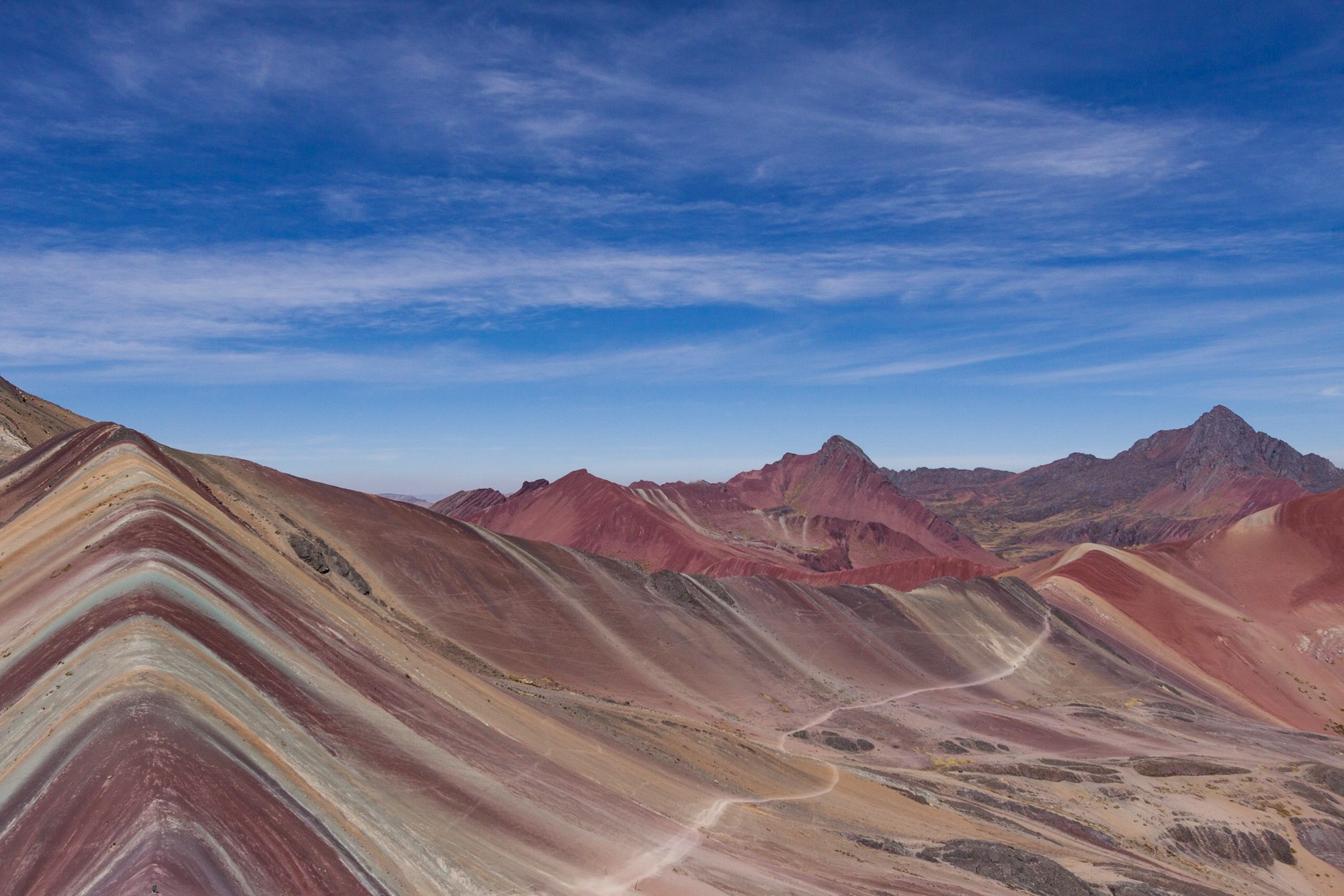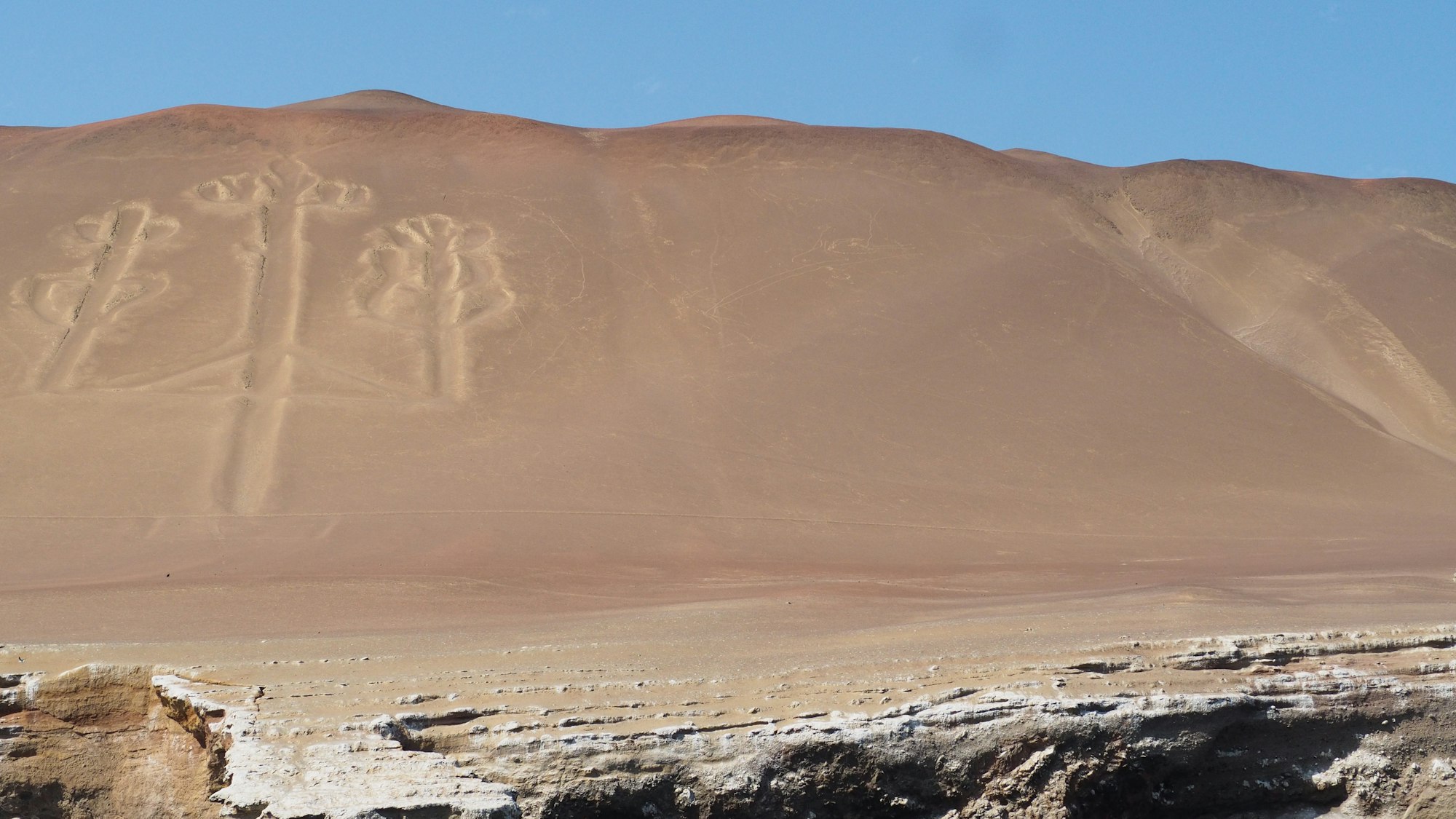12 Best Places to Visit in Peru
Travel to the fascinating and mysterious Peru, a world-famous tourist destination where you will have the opportunity to admire some of the most beautiful landscapes and some of the most interesting archaeological and cultural-historical attractions in the world.
Visit Nazca, a place with mysterious drawings and take a cruise to follow the wildlife of the Ballestas Islands. The long road between the sea and the mountains to Arequipa will be rewarded by the white beauty of this colonial city, dominated by volcanoes. Cross the Colca River Valley to reach the deepest canyon in the world, the Colca Canyon, where we will admire the Inca terraces and the flight of the Andean condor.
Take a cruise on Lake Titicaca, the navigable lake at the highest altitude in the world and we will discover the remarkable Cusco, former centre of the Inca world and the massive zigzag walls of Sacsayhuaman. Also, will visit the old town of Ollantaytanbo and the famous "salineras" and finnaly, reach Machu Picchu, the well-known citadel recently included among the seven wonders of the modern world.
Let's explore each of the destination separately:
Lima
Lima, the city of kings, welcomes its visitors with its unique blend of romance, history and culture, with bohemian neighbourhoods like Barranco or Miraflores and the colonial architecture of the historic centre, with its Cathedral that houses the tomb of the conqueror of the Inca Empire - Francisco Pizzaro, or with its 400 impressive balconies, but also with museums that are real sources of knowledge such as the Gold Museum or the National Museum of Archeology, Anthropology and History.
The architecture of the Peruvian metropolis is characterized by a mix of styles, a perfect illustration of the various trends in the historical periods of the city. The historic centre still preserves constructions with balconies from the viceroyalty period and from the first years of the republic, for which it was included in the UNESCO Patrimony in 1988.
Near the city is the archeological site Huaca Pucclana built of millions of bricks, former site of worship of the god Pachacamac.

Ballestas Islands
Ballestas Islands, the largest sanctuary of wildlife on the Peruvian coast is a wonder of nature and wild marine life and is home to thousands of resident or migratory birds, including pelicans and cormorants, but and also the territory of sea lions, Humboldt seals and penguins.
On their way to the islands, the boats pass the famous El Candelabro - a geoglyph formation similar to the mysterious drawings from Nazca, in the shape of a 128 meter long chandelier, dug on the hillside.

Cusco
Capital of the vast Inca Empire, Cusco was in the 15th century a remarkable city, full of magnificent stone palaces and temples decorated with gold. The Spanish conquerors were impressed by the city, so instead of completely destroying it, they built a colonial city on top of these solid foundations. Koricancha is a perfect example of preservation, the stone of the Temple of the Sun being used to support a baroque church.
Cusco is today a typical example of a fusion of Inca and Spanish culture, a city full of life, with excellent museums, bohemian neighbourhoods, imposing Baroque churches and surprising Inca sites.

Rainbow Mountain
Rainbow Mountain is about a 2h drive from Cusco, and the hike to the observation point takes another two hours. The mountain is famous for its natural, multicoloured beauty. This rainbow-like look is created by mineral sediments from the entire area, giving the mountain shades of turquoise, lavender, orange and other colours.
It was recently discovered due to melting snow. The altitude that you need reach is about 5.000 meters, and the realization of this visit requires an adequate physical condition.

Nazca
In the Nazca Desert, one of the driest places on Earth, on an area of 450 km², lies one of the greatest enigmas of mankind: gigantic drawings depicting human and zoomorphic figures that can be seen well only from great heights. Their origin is attributed to the Nazca Culture, flourishing between the years 200 BC - 700 AD.
If the construction techniques were deciphered relatively easily, the reason for their existence remains a mystery. The most circulated motivation remains the religious one, according to which through this the images the locals signaled to the gods their presence on earth. The main drawings are Astronaut, Hummingbird, Kiwi, Dog, Scorpio, Monkey, Lizard, Snake, Tiger, the largest drawing reaching a length of 270 m.

Arequipa
Isolated between desert and mountains, in the heart of an oasis of greenery, is located Arequipa, the second metropolitan area of Peru, a rich city and the most important intellectual centre of the country.
Its houses made of shiny white volcanic stone gave this city the name of Blanca Cuidad. Long isolated from the rest of the country, this city is dominated by majestic snowy volcanoes having retained its colonial character: mansions with richly decorated facades and windows decorated with wrought iron, numerous churches with pediments of white stone carved like fine lace.
The highlight of any visit to Arequipa is the Monastery of Santa Catalina, a city within a city, a quiet paradise full of geraniums, coloured in red and blue.

Colca Canyon
Twice as deep as the US Grand Canyon, Colca Canyon is located in southern Peru, on the river of the same name. Although its walls are less steep than those of the Grand Canyon, the visual spectacle is offered by the vegetation, the multitude of pre-Inca terraces, the villages inhabited by ethnic Collagua and Cabana, but also by the condors that fly majestically over the heights.
The point of attraction is undoubtedly the Condor Cross where tourists stop to admire the flight of these impressive birds. The best times of the day when condors can be tracked are the early hours of the morning and evening.

Lake Titicaca
The blue waters of Lake Titicaca cover a big part of the high plateau of the Cordillera Andes - Altiplano. Its shores and islands are a land of legend, old customs and traditions well preserved by the locals.
The floating Uros Islands, made of reeds and totora roots, Taquille Island or Amantani Island inhabited by native Quechua speakers are a good reason for a cruise on Lake Titicaca, being the only navigable lake at this high altitude.
The legend of the lake says that Inti - the Sun God sent Manco Capac and Mama Ocllo here to establish a new civilization, and the place where Manco Capac stuck his golden staff was called Cusco.
The lake and the surrounding area are declared National Reserves. Sailing on the lake is done with the traditional reed boats, but also with small motor boats. The Uros Islands on Lake Titicaca are home to one of the oldest civilizations in the world, which preserves its traditions unaltered.
The 44 floating islands are built of reeds, the lifespan of an island is 30 years. Taquille Island located in the Peruvian part of Lake Titicaca offers a special view of the lake if you dare to climb the 600 steps up to the highest point of the island.
Ollantaytambo
Ollantaytambo, the starting point for the sights of the Urubamba Valley, is the oldest continuously inhabited settlement in the Americas. Here, on the narrow streets, among the houses with Inca walls, you will live the experience of going back in time.
On the surrounding hills there are several Inca vestiges, among which the terraced ruins that seem endless, of an impressive temple-fortress. The sacred buildings and the Temple of the Sun at the top of the site are built of stone blocks weighing about 50 tons and brought from a quarry 6 km away. The wall next to the temple consists of 6 blocks of pink porphyry and is decorated with Inca symbols including the Andean cross.
In the middle of the mountain in front of the fortress you can see several barns and a huge human face, the face of Wiracocha, the almighty creative god of the universe in Inca mythology.

Aguas Calientes
Apart from the Inca Trail, the small town surrounded by mountains - Aguas Calientes - is one of the best access roads to Machu Picchu. Its location, thermal baths, but also the multitude of restaurants make this town a picturesque place to rest before visiting the famous Inca fortress.

Machu Picchu
In 1450, the Incas chose the narrow and deep valley of the Urubamba River to build Machu Picchu, due to the spiritual strength given by the natural beauty of the Andean landscape.
Since the rediscovery of the fortress in 1911 by Hiram Bingham, the ruins of Machu Picchu have meant more than just an archeological site. And 100 years later this citadel, recently included among the seven wonders of the modern world, is still immersed in mystery and folklore.
One thing is certain: Machu Picchu is one of the beautiful examples of the art of arranging space in direct connection with nature. In this true urban labyrinth, the temples, the steep terraces, the gardens, the granite and limestone stairs, the access roads, the houses, the aqueducts, all seem to be sculpted directly in the mountains.
The shapes of the buildings are an echo of the outline of the surrounding mountains, and the windows were built to watch the sun during the solstices. At dawn, when the sun's rays sneak silently over the jagged silhouette of the mountains, it throws orange fire on the ruins, enough to excite any observer.

Chivay
The capital of Caylloma Province, Chivay is located in the Colca Canyon Valley, being one of the starting points for Condor Cross or for visiting the thermal baths located a short distance from the city. Chivay is a town with an intense tourist and commercial activity, and the surrounding area is home to important obsidian deposits.



